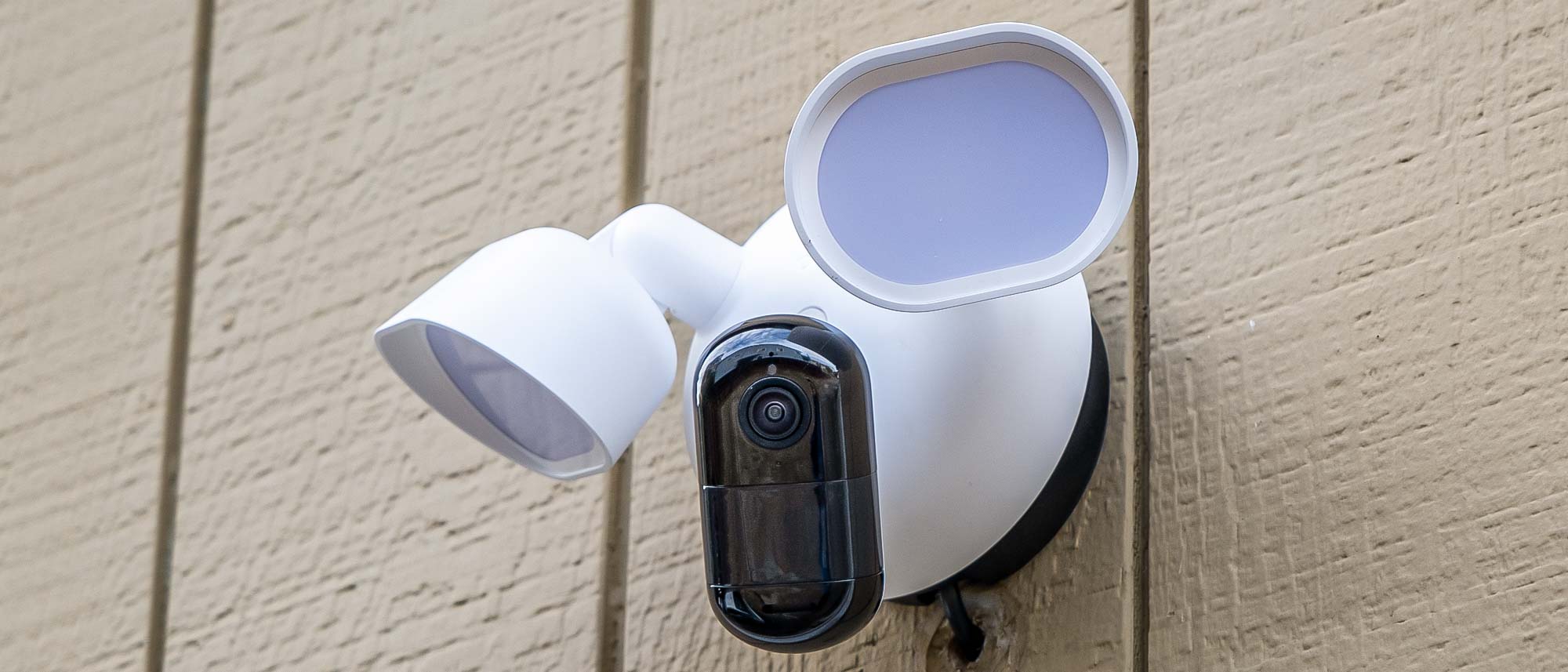Tom's Guide Verdict
The Arlo Wired Floodlight Camera offers a range of features and excellent image quality overall. While the ongoing subscription costs are a little frustrating, those willing to pay should consider this as arguably the best floodlight camera option out there.
Pros
- +
Crisp detail
- +
Great-looking night footage
- +
Can start recording based on audio
- +
App is well-designed
Cons
- -
High subscription fees
- -
No HomeKit support
Why you can trust Tom's Guide
Resolution: 2560 x 1440 (2K)
Field of view: 160 degrees diagonal
Size: 10.43 inches (width), 6.65 inches (height), and 5.33 inches (depth)
Wireless: 2.4GHz Wi-Fi
Works with: Alexa, Google Assistant, and IFTTT
Floodlight cameras have become a lot more popular among the best outdoor security cameras as a way to get more detail and a better image from the security camera outside of your home. An attached floodlight essentially means that a camera can illuminate any subject nearby, avoiding having to rely on weird-looking infrared footage and instead capturing full-color video, even in the dead of night. You might be surprised to find out that Arlo, one of the biggest and most popular manufacturers of smart home security cameras, has never released a wired floodlight camera as part of its lineup. Until now, that is.
The Arlo Wired Floodlight Camera sits alongside the Wireless Floodlight Camera as the perfect option for those who want a little more light and a little more color from their footage captured at night. Of course, it works within the Arlo ecosystem, has a 2K resolution, and more. But is Arlo's first run at a wired floodlight camera worth buying, or should you go for someone who has a little more experience?
Arlo Wired Floodlight Camera review: Price and Availability
The Arlo Wired Floodlight Camera was released in the fall of 2024, and is available from the Arlo website and participating retailers. It is priced at $149.99, though it will likely get discounted, and at the time of this writing, it was available for $99.99.
Arlo Wired Floodlight Camera review: Design
The Arlo Wired Floodlight Camera may represent a bit of a design shift for Arlo. The camera looks pretty different from its Wireless Floodlight Camera, with a kind of bulbous camera module flanked by two floodlights that peek over its shoulders. The camera module itself can swivel a little in place so that you can get the perfect positioning. The floodlights can't swivel quite as much as the camera, but they can tilt up or down, which is helpful, especially when you're turning the camera to one side and find that one of the floodlights is in the way.
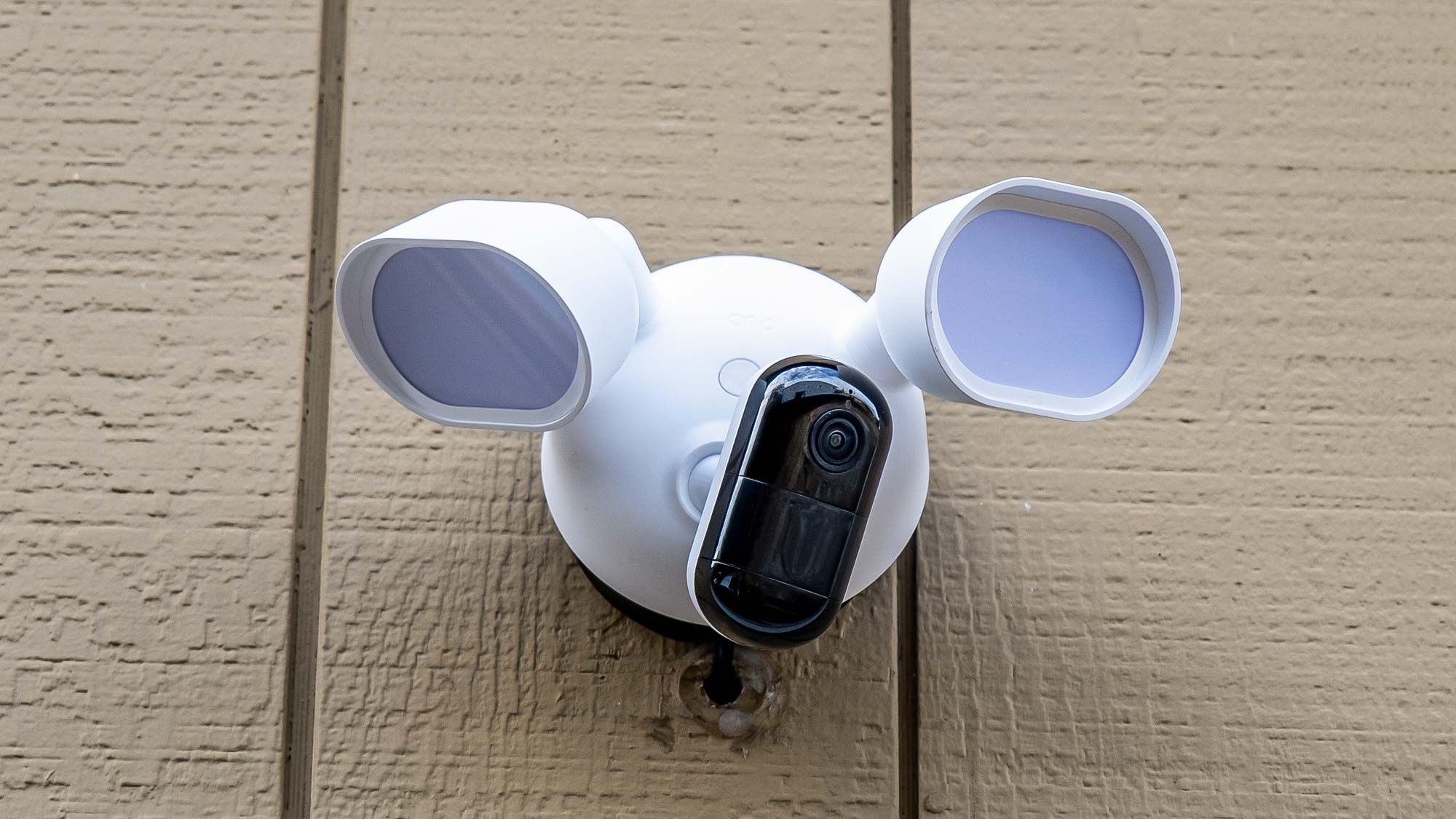
The camera is available in two colorways. There's a white model, reminiscent of Arlo's previous generation cameras (thanks to its all-white body and black face), and there's a black model, which is completely black except for the covering for the floodlights. Both look good, but we're reviewing the white model.
For the most part, the camera is made up of plastic, but it feels quite premium. The plastic felt strong, and I like that there's a rubber gasket on the back of the camera to prevent any water from getting in, which could be potentially dangerous. Of course, it remains to be seen how long that gasket will actually last, but it's a nice inclusion nonetheless.
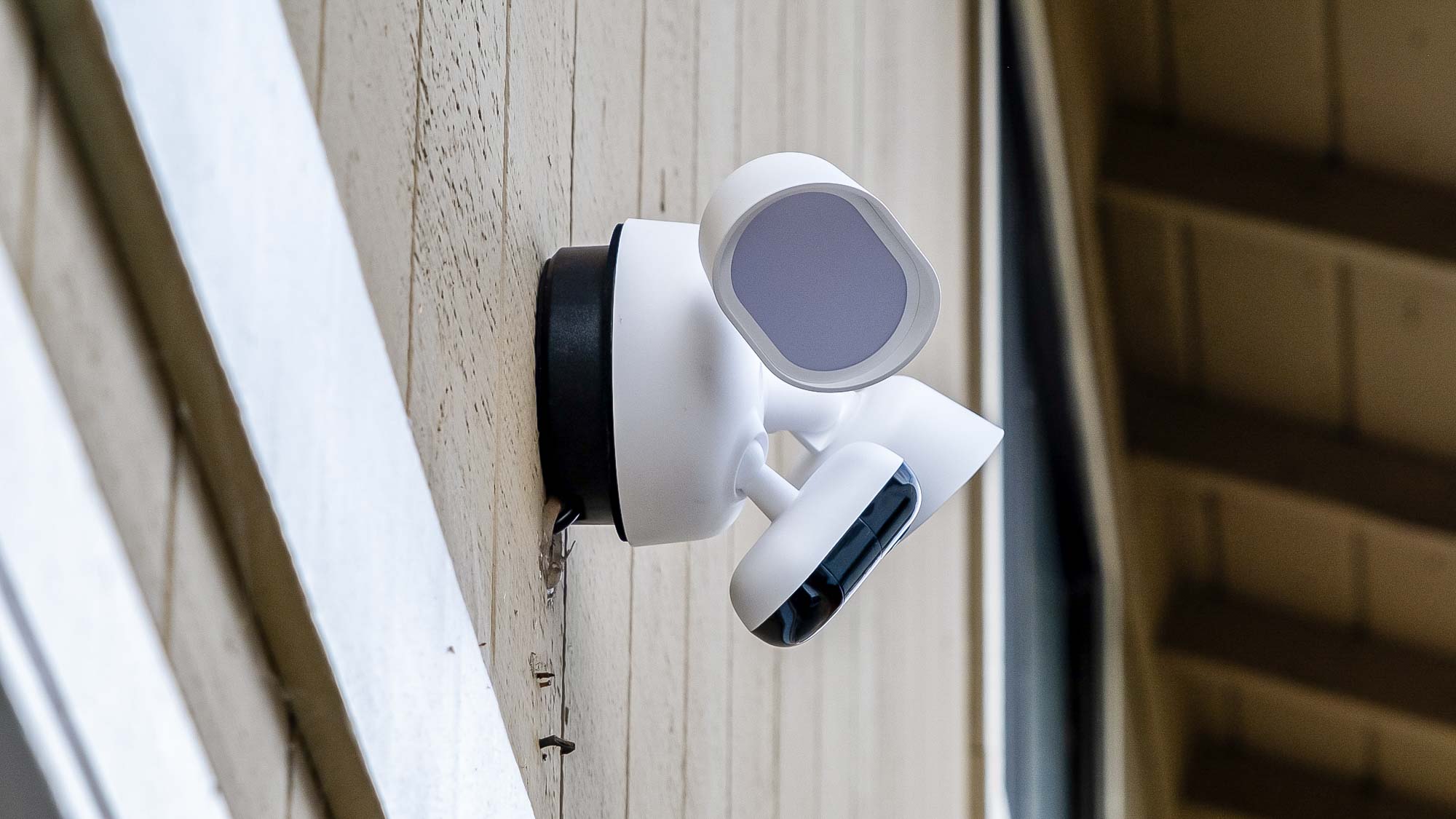
The camera comes with everything you need to get set up, including the hardware required to attach a mount to your junction box and wire the camera in. There's even an S-hook that you can use to attach the camera to the mount while you're wiring things together, so you don't accidentally drop the camera. After you attach the mount to the opening of the junction box and attach the ground wire to that mount, you'll connect the other wires on the camera, then screw the entire housing of the camera to the mount. It's actually a relatively simple installation process, though depending on where you plan on placing the camera, you may need to use a ladder to do it.
Arlo Wired Floodlight Camera review: Image and Audio Performance
Generally speaking, the image quality on the Arlo Wired Floodlight Camera is pretty good. For starters, the camera has a 2K resolution, so while it's not necessarily as crisp as the 4K security cameras out there, it does offer more detail than 1080p options, and I found it to be more than detailed enough, especially as someone who usually uses HomeKit Secure Video, which is limited to a 1080p resolution. The Arlo Wired Floodlight Camera offers a 160-degree diagonal field-of-view, which was plenty wide enough to cover most of my driveway.
On top of offering a reasonably crisp resolution, the camera also supports HDR, which can really come in handy, depending on where you place the camera. I’ve found HDR to be particularly useful when a camera might be pointed out a window, for example, as instead of simply showing a completely blown-out image, it can often capture some detail. Generally, HDR seems to be slightly less helpful at the other end of the spectrum – in the shadows – especially when a camera supports multiple forms of night vision. But, it certainly doesn’t hurt to have, regardless.
Speaking of night vision, while the camera does indeed have two large floodlights built into it, it still supports infrared night vision too. That allows you to use a combination of the two depending on the time of day and your needs at the time. Keep in mind that if you only want to use infrared night vision, there's not much point in spending the money on a security camera with floodlights. The infrared-based image on this camera looked quite good – and offered more detail than many others that I’ve tested. And, it’s more useful for capturing objects that are further away than the floodlights might be able to illuminate.
Those floodlights are pretty powerful though – and were good at illuminating objects at short and medium distances. With the floodlights on, images had relatively natural-looking colors, which can come in handy in determining, for example, the color shirt that an intruder might be wearing. There are other reasons to get a camera with a floodlight – it could be a deterrent to a would-be intruder, and beyond security, it can help with your own safety when you get home in the dark. The floodlight was responsive in turning on when motion was detected, and you can tweak the levels of motion that trigger the floodlight in the Arlo app.
Like most modern security cameras, the Arlo Wired Floodlight Camera supports two-way audio, but beyond that, it can actually use the built-in microphones and start recording based on sounds, not just physical motion. That’s pretty handy – and it means that even if the camera doesn’t directly spot something, it could still capture the audio of an event happening at your home. The microphone built into the camera was good enough to hear words spoken by someone in my driveway – though don’t expect a hi-fi experience. The same was true of the speakers – good enough for two-way audio.
Arlo Wired Floodlight Camera review: App
The Arlo app has evolved a fair bit over the past few years, and it’s relatively easy to navigate and well-designed. The app is separated into a number of different tabs, and when you open it, you’ll be greeted with a Dashboard tab that shows each of your cameras, and offers the ability to switch between “Arm Away,” “Arm Home,” and “Standby” modes. From there, simply tap on a camera to jump into a live feed of it. This Dashboard is also customizable – so if you have many Arlo cameras set up, but only need a few of them on the main screen, you can add or remove them as needed.

Other tabs include a Feed tab, which simply shows a chronological view of the footage that was captured, and a Devices tab, which shows a more expanded view from your different cameras, and lets you jump into settings for them.
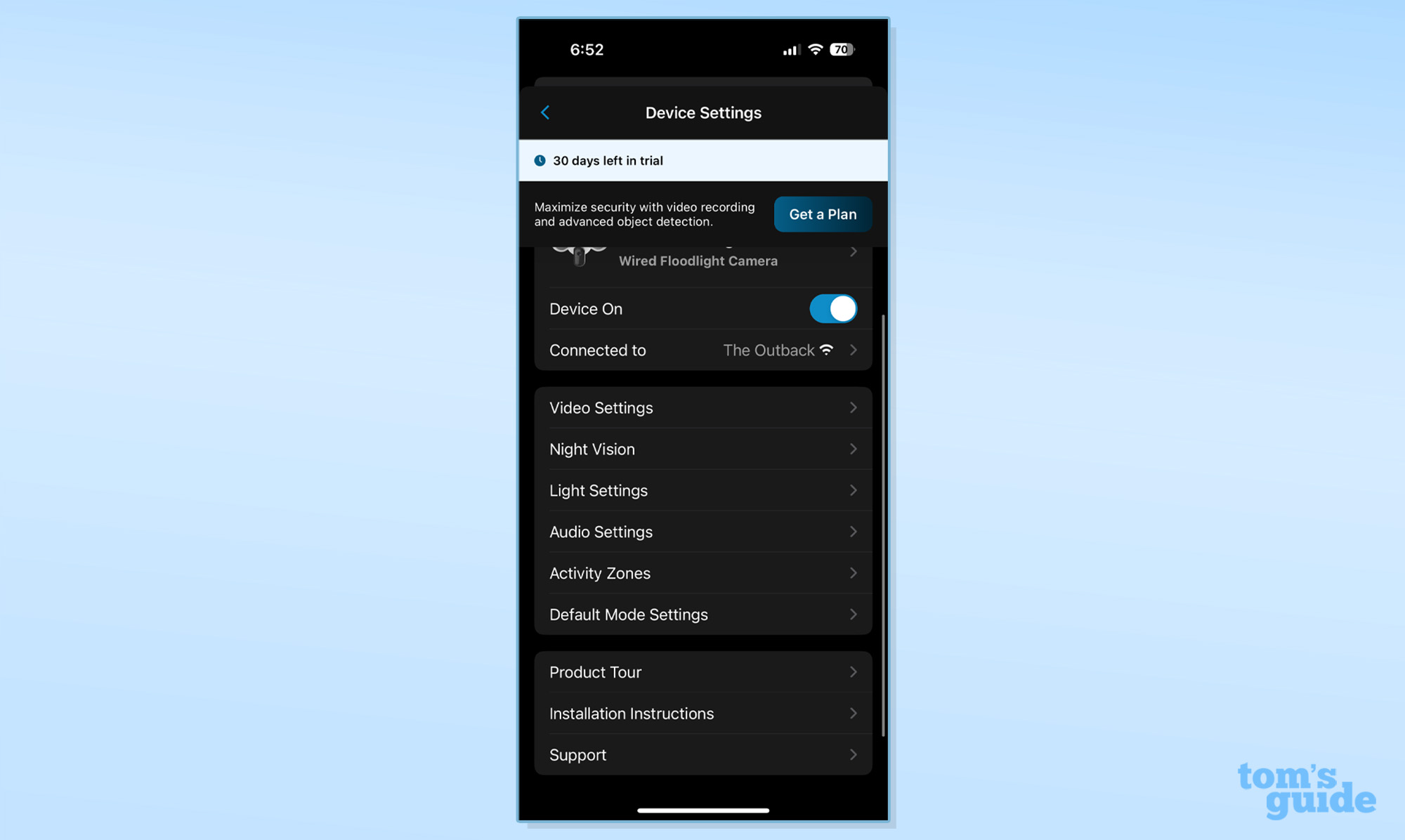
There are a ton of settings to go through for each camera too. It's relatively easy to set up motion zones that let you prevent unwanted notifications, and tweak how you want motion to be handled depending on how the system is armed – for example, you might not want motion to trigger notifications when the system is in “Arm Home” mode.
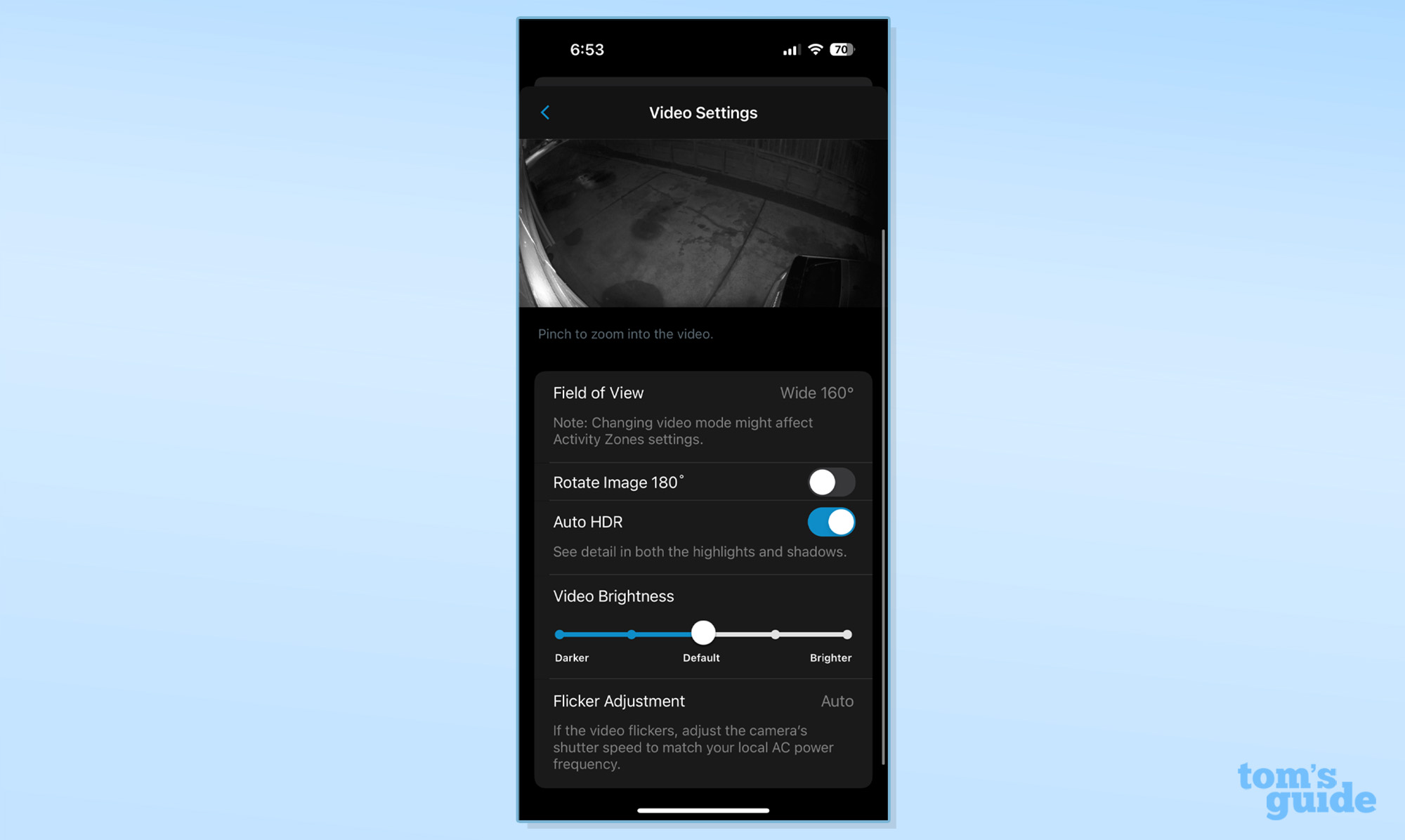
Arlo lets you set up geofencing too, so you can have your system automatically arm or disarm based on your location. I found that it was relatively easy to set up geofencing, and the system seemed responsive when I entered or exited the predefined area. At times, it did take a second or two to register that it should be arming or disarming, but it wasn't overly slow.
Arlo Wired Floodlight Camera review: Smart Home Compatibility
As has been the case with Arlo cameras for many years now, the Arlo Wired Floodlight Camera does not support HomeKit – so you won't be able to integrate it with an Apple-based smart home without some fancy trickery. It does support Alexa and Google Assistant, as well as IFTTT, so Amazon and Google users will be able to make use of the camera.
I'm hoping Arlo steps up its smart home compatibility game at some point soon, especially as Matter continues to roll out. Over time, simply supporting individual ecosystems will likely stop being acceptable, so eventually Arlo may have to add Matter support that expands the game to a new level. That expands how its cameras can be used. Of course, I don't expect it to support features like HomeKit Secure Video anytime soon, even if its cameras do eventually end up usable within an Apple smart home.
Arlo Wired Floodlight Camera review: Subscription Fees
Like many other modern security cameras, to get the most out of the Arlo Wired Floodlight Camera, you'll need to subscribe to Arlo Secure. There are a few different Arlo Secure plans — and Arlo has updated them recently, to now only include two options. The cheaper plan is the Arlo Secure Plus plan, which offers a 60-day video history and the ability to use most of the smart features, like person and vehicle recognition, package detection, and audio detection.
The step up from there turns your system from a consumer-focused system into a professional one. It’s called Arlo Secure Premium, and it offers 24/7 professional monitoring, emergency response, and cellular and battery backup. It also includes a discount on home insurance (providers vary), and access to Arlo Safe, which lets you immediately get in touch with security experts and call for immediate help.
Some features make sense to charge for. It makes sense that you'd have to pay for cloud storage, as that's something that Arlo has to pay directly for. It doesn't quite make as much sense to lock features like animal detection behind a subscription plan, as it's a feature that's built into the camera and doesn't really require ongoing costs from Arlo itself.
Pricing is a bit complicated. As mentioned, Arlo Secure Plus is cheaper. If you pay for it annually, you’ll pay the equivalent of $7.99 per month for one camera, or $17.99 per month for unlimited cameras. If you pay monthly, you’ll pay $9.99 or $19.99 per month, respectively. Arlo Secure Premium only includes an unlimited camera option — the equivalent of $24.99 if you pay annually, or $29.99 per month if you pay monthly.
Arlo’s plans are more expensive than many others who offer security camera subscriptions. For example, Ring costs $9.99 per month for unlimited cameras on Ring Standard, and Nest offers unlimited cameras in its standard Nest Aware plan at $8 per month. However, neither of those companies offer a camera with a resolution as high as Arlo’s, and you’ll still have to pay more than the base fees for professional monitoring on the other services (Ring offers a professional monitoring add-on for $10 per month).
Arlo Wired Floodlight Camera review: Verdict
Arlo's first wired floodlight camera showcases the company's experience in home security. The camera offers great image quality with powerful floodlights that illuminate short and medium-distance subjects – plus, its infrared-based night vision is high quality enough for longer-distance motion. However, its subscription fees are higher than we would have liked to see. If you don’t want to pay a recurring fee, you might want to check out the Eufy Floodlight camera E340 ($219). We haven’t tested it yet, but it offers 3K resolution and no subscription fees, but it does cost more upfront.
But if you don't mind not using the system with HomeKit or paying on an ongoing basis to store footage, the Arlo wired floodlight camera is an excellent option. In fact, it's probably the best wired floodlight camera in its price range, coming in at a much lower price than the Nest Cam with floodlight, while offering a higher resolution.
Christian de Looper is a freelance writer who has covered every facet of consumer tech, including mobile, audio, home theater, computing, gaming, and even car tech. At Tom’s Guide, Christian covers TV and home theater tech, and has reviewed dozens of TVs, soundbars, and A/V receivers, including those from the likes of Samsung, Hisense, TCL, and Vizio.
